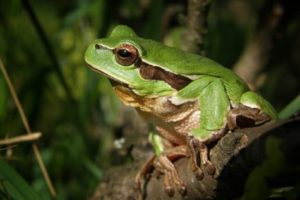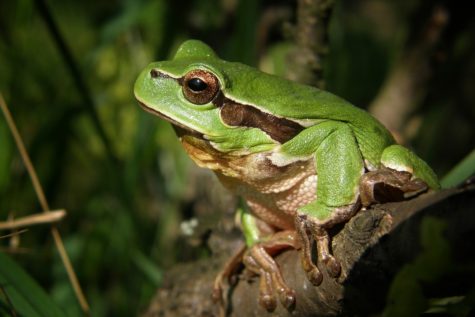LUND, Sweden — It’s a moonless night in the forest and you can’t see an inch in front of your face. But something out there is watching you.
Newly discovered to have some of the best night vision in the animal kingdom, it’s not the creature you might expect. Rather than a jungle cat, or perhaps an owl, it’s instead something smaller, and greener.

According to researchers from Sweden’s Lund University, it’s frogs that now claim some of the best night vision on earth. More specifically, it’s their ability to see color even in pitch black that sets them apart.
“It’s amazing that these animals can actually see color in extreme darkness, down to the absolute threshold of the visual system,” says Almut Kelber, a professor of sensory biology and one of the study’s lead authors, in a press release. “These results were unexpected.”
While human vision loses color in low light, the researchers said frogs and toads seem to have special capabilities for still seeing color. Even if it was so dark that humans couldn’t see at all.
“We have previously shown moths and geckos are also able to see color in inferior light conditions compared to humans. However, frogs apparently have a unique ability to see color in the dark,” explains Kelber.
According to the research paper, the ability comes down to them having two types of “rods” in their eye.
Most larger animals, including humans, have two types of light sensing cells in their eyes called cones and rods. Cones, generally used for sensing color, tend to shut down in low light. In darkness, our rod cells take over, leaving us with the colorless vision we associate with a moonlit night.
Frogs and toads, however, seem to be unique among vertebrates in having two types of rods with different sensitivities. The researchers said this led them to suspect that they might have a special ability to see in the dark.
It wasn’t until the third of three experiments that they found evidence that this was true. This experiment tested a common and serious situation the animals often find themselves in — navigating out of a dark underground passageway.
Further experiments found the frogs also use their color vision superpower when hunting for food in the dark. In contrast, they found the amphibians don’t tend to use it when looking for a mate.
The research paper was first published earlier this year in a special ‘Vision in dim light’ issue of The Philosophical Transactions of the Royal Society B.

This is QUITE the rigged question, and topic even. First off, the human eye can (in theory) detect light down to a level of 9-photons per second. That’s TINY, by any measure! Secondly, light of any kind, to be measured independent of distance requires a measure of candelas-per-square-meter, which gets into ‘lighting per area’. Lastly, you have to understand that as the wavelength lengthens (to red, vs violet) that it becomes more-visible to the eye (regardless of human or frog), so actually, you find that where you may be able to detect near-infrared at a low photon rate, you MAY NOT be able to detect a blue or purple light at even twice this rate. Conversely, depending on the frog’s rod apparati or configuration, it may be more ‘tuned’ to see near the ultraviolet spectrum more astutely than a mammal’s infrared tendencies. Again, hard to compare ‘apples-to-oranges’, when no one has either in this contest. I know – leave it to an engineer to bring up such convoluted discussions in a layman’s forum…